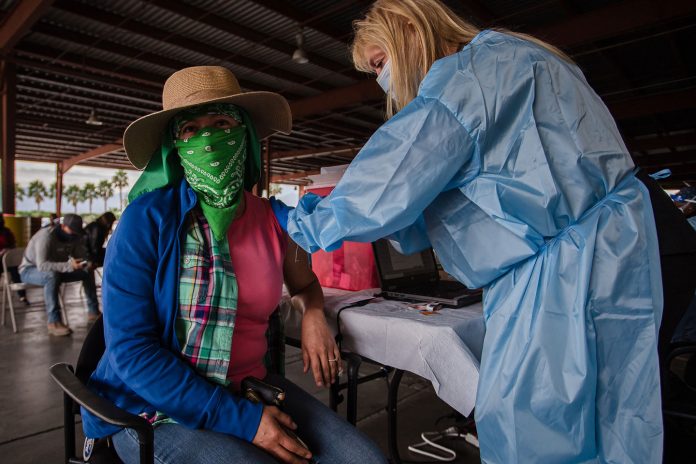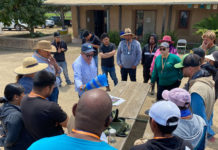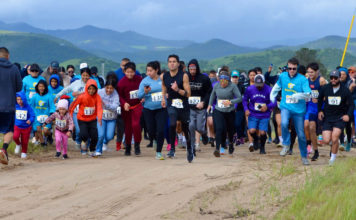
CALIFORNIA — Before state officials announced that 40% of California’s new vaccine doses would go to low-income communities, leaders were struggling to make good on promises to prioritize vulnerable Californians in the vaccine rollout.
As my colleague Miriam Jordan recently wrote, farmworkers were among those who were disproportionately hurt by the pandemic and harder to reach with help. But a landmark initiative is taking vaccine doses to the fields of the Coachella Valley. She explained more in this dispatch:
A year ago, at the onset of the coronavirus pandemic, agricultural workers were deemed “essential” by the Trump administration.
While much of the country was being advised to stay home, these workers, overwhelmingly undocumented immigrants, were told by their employers that the government considered it vital that they stay on the job in the vegetable fields, packing houses and poultry plants that guarantee Americans have food on the table.
The irony of this unusual recognition was not lost on the farmworkers I talked to in California, who had lived for decades in the shadows, often trying to evade detection by immigration enforcement.
“It’s like suddenly they realized we are here contributing,” said Nancy Silva, a Mexican immigrant working in the clementine groves near Bakersfield.
Shortly after, the coronavirus began rampaging through food-processing plants from Georgia to South Dakota to California. Thousands of farmworkers contracted the virus across California, the nation’s agricultural powerhouse. Most were poor Mexican and Central American immigrants who lived in crowded dwellings or in multigenerational homes, rendering it impossible to maintain distance and stem the spread of disease and death. In some farming communities, the positivity rate among people tested for the virus was a stunning 40%.
So health experts and immigrant advocates applauded when the Centers for Disease Control and Prevention placed agricultural workers near the top of the vaccine priority list. But in California, as in other states, the limited supply and the challenging rollout meant that it could be months before farmworkers got their turn.
Riverside County decided that its farmworkers must not wait. In late January, growers, advocates and the health department joined forces to plan vaccination drives, right next to the fields.
To report on the effort, I visited the Coachella Valley, a productive farming region in the county’s desert.
On breaks from bunching scallions, packing dates and pruning vineyards, hundreds of workers streamed into a mobile clinic to get their shots.
When employers began offering to register their workers for the vaccine, some of them, like Evila Velasquez of El Salvador, hesitated at first.
“I wasn’t sure that it could be trusted,” she said. “I wanted to wait until a lot of people had gotten the vaccine first.”
But then, Velasquez, 38, a single mother who sorts dates, said that she gave it some thought and decided not to pass up the opportunity.
She walked over to the open warehouse, where a pop-up clinic had been set up, with a co-worker, Jeronima Lezama, 48.
All five members of Lezama’s household had contracted the coronavirus before Christmas, and she had the worst case.
“I almost couldn’t breathe,” she said, noting that she still got tired easily.
“I had no doubt in my mind that I wanted to be vaccinated,” said Lezama, an undocumented immigrant from Mexico.
Neither did Primo Ruiz, 36, who arrived in his muddy boots straight from the artichoke fields. He had lost a dear friend, just 40 years old, to the virus, he said.
After Riverside County’s success, many other counties in California have begun vaccinating farmworkers.
______
Another reopening update
Last week, as part of the state’s latest restructuring of its vaccination campaign prioritizing communities where the spread of the virus is most rampant, officials announced new metrics and new, slightly looser restrictions for each color-coded reopening tier. The updated rules, which will take effect April 1, are aimed at accelerating a return to whatever normal looks like after the pandemic.
“With case rates and hospitalizations significantly lower, the arrival of three highly effective vaccines and targeted efforts aimed at vaccinating the most vulnerable communities, California can begin gradually and safely bringing back more activities,” Dr. Mark Ghaly, the state’s health and human services secretary, said in a statement.
So, once again, here’s what you need to know:
How have the reopening metrics changed?
The new metrics will take into account the number of vaccinations administered to people who live in higher-risk, lower-income communities, according to a state index.
Once counties reach certain vaccination thresholds in those designated communities, case rates can be higher.
In order for counties to enter the second most restrictive red tier right now, for example, they must have no more than 7 cases per 100,000 people. A case rate of lower than 4 per 100,000 people would make that county eligible to move into the orange tier.
But once 2 million vaccine doses have been administered to residents of those vulnerable communities in a given county, the red tier range will widen to 4 to 7 cases per 100,000 people.
What will be allowed to reopen in each tier?
For the most part, the rules for businesses reopening in each tier will stay the same come April 1. In the most restrictive purple tier, for example, restaurants, museums and gyms will still be allowed to operate outdoors only. In the red tier, those will still have their indoor capacity strictly limited.
The biggest changes are in the rules for large-scale outdoor events and amusement parks.
Effective April 1, outdoor live events — including concerts and sports — can take place in any county, with assigned seating and other modifications.
In the purple-tier counties, those events can have 100 people or fewer, audience members must come from within 120 miles and concessions can’t be open. In red-tier counties, there isn’t a restriction on audience members, but the events will be capped at 20% capacity, with other rules for suites.
In the orange and yellow tier, live events can already take place at reduced capacity.
And while amusement parks still won’t be able to reopen in purple-tier counties, starting April 1, they can in red-tier counties — at 15% capacity and with other modifications, including a weekly worker testing program.
That means you may be able to go to a baseball game on opening day, and you might be able to go to Disneyland as early as next month.
Copyright 2021 The New York Times Company














